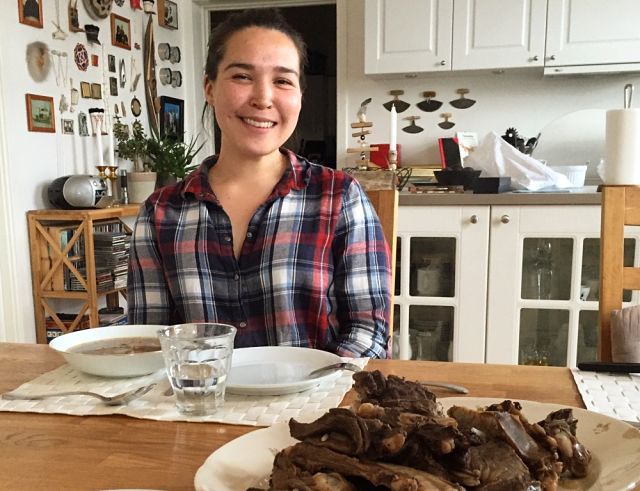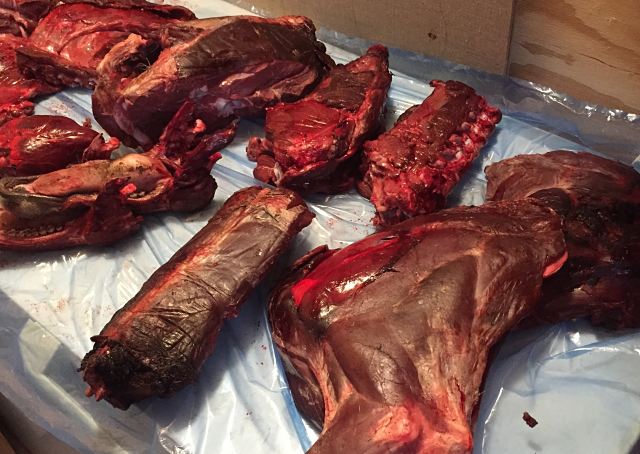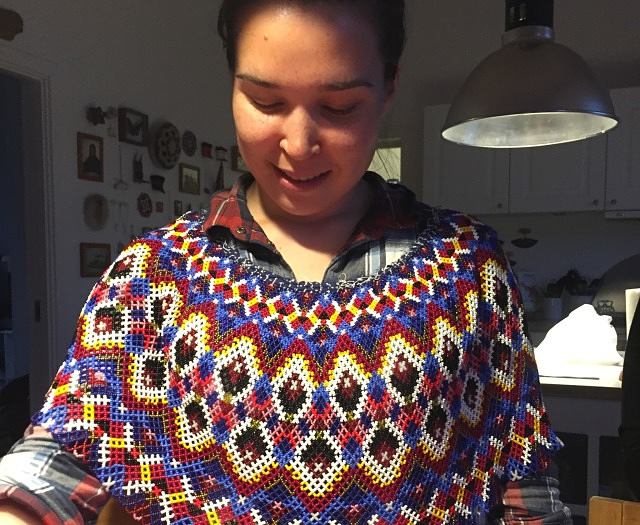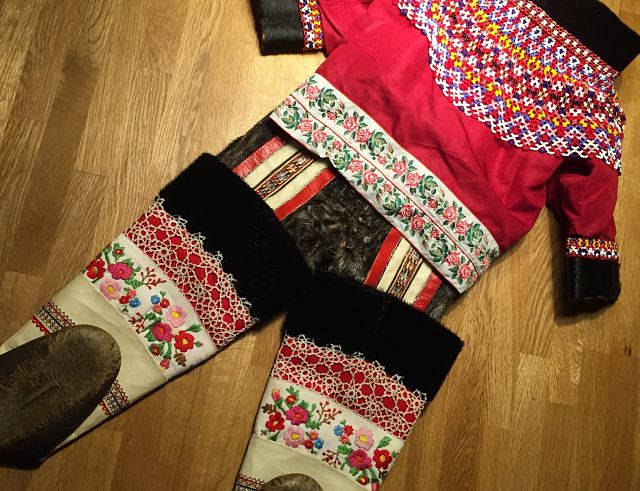Tradition fuels a home in western Greenland
On the heels of a daughter’s first successful caribou hunt, a family shares traditions – old and new – over dinner.

The day I met Tukumminnguaq Olsen, she took me to the monument in Sisimiut, Greenland, dedicated to her great grandfather, Gustav Olsen. He was a Greenlandic missionary in the Qaanaaq (Thule) area, Greenland’s northernmost community and the place where Tuku grew up. Even though she lives further south now, she still considers herself a Thule person. Tuku is a university student who spends her summers showing tourists around the community of Sisimiut, Greenland’s second-largest town (population 5,600), located on the coast of the Davis Strait. I met her three weeks before she returned to Denmark to study politics.
“The first missionaries told us to get Christian names, to get rid of our culture and to burn our drums,” Tuku told me, “but he was a good missionary because we could keep our names and drums. We still have drum dancing in the north because of him.”
I asked Tuku for a recommendation on who to meet next in order to get a better understanding of Greenlandic life (I’m fascinated by the connections revealed one introduction at a time), and she invited me over for dinner to meet her parents.
I arrived at a modern house on the edge of town. Tuku had gathered her long dark hair into a high bun, similar to the traditional Greenlandic style, and she wore earrings made from narwhal tusk carved into tiny polar bear heads.
First, we ate tingulaat, a mix of boiled cod livers, angelica (a robust green plant that grows locally) and crowberries – black and ripe. The cod had been caught just a couple of days earlier by Tuku’s family. We scooped it from our bowls with small squares of dark rye bread, a Danish touch.

Next came the caribou soup – tuttu-suppa – made with meat from a caribou Tuku had hunted with her father the weekend before. It had been her first successful caribou hunt, and she showed me photos on her smartphone of her carrying the animal’s haunches over her shoulders, across the tundra.
The trick to the soup, I learned from Tuku and her mother, is to cook the meat in the broth with carrots, potatoes, peas, rice and angelica, but to remove it before serving, so one can dig in and get the meat off the bones.
Over our special meal of country food, called kalaalimineq, Tuku’s parents, Axel Lund Olsen and Makka Nykjær, talked about the trips they used to take with their dog team, how caribou from different regions tastes different and how leaving the meat out in the open for two or three days softens it and improves the taste.

As the hours passed, I began to see that the house, despite its crisp new-build feel, was filled with stories from the land. Makka had curated artifacts of her life’s memories on the kitchen wall above a collection of houseplants and a CD player:
- the feet from Makka’s brother’s first ptarmigan kill,
- an ancient bone ring used to attach a sled dog into its harness,
- a harpoon head fashioned from the fuselage of a crashed airplane,
- a tropical butterfly, a gift from one of Tuku’s high school teachers.
After a dessert of pie from the bakery, we pulled the traditional clothing out of the storage room. It seemed to me the family had enough items for an exhibit on the history of Greenlandic dress.
Tuku started by presenting Axel’s polar bear pants – the warmest possible layer a hunter could wear. They looked enormous next to the West Greenlandic outfit Makka wore when she was two years old, more than 50 years ago.
Next, Tuku draped a beaded shawl that her mother had worn for her wedding over her shoulders. She explained that the beads should be the right length and that the colors matter; for example, this one has too much blue for Tuku to wear in her twenties, but she said, “Maybe I can wear them when I get married.” In centuries past, the beads would have been made from capelin vertebrae dyed with blood and blueberry.

These days, some people are altering the colours and styles of the traditional outfits, but Makka and Tuku don’t like the changes. When I asked why, Makka just looked at me and said, “It’s ugly.”
We admired each piece until embroidery, lace, beadwork and sealskin covered the kitchen table.
It was after 10pm by the time Tuku found an outfit that portrayed important pieces of her family history. She stood in front of the full length mirror in a sealskin amaut made for her mother by a woman in Qaanaaq. Intricate piecing gives the garment its shape, including the hood built to hold a small child. The red kamiit (long boots) are a West Greenlandic style appropriate for married women. They had been made for Makka by her grandmother, who was well known for her sewing. Long white hair from a polar bear’s foreleg fringed the top edge of the boots to keep out the snow. The clothing itself is two decades old, but the technology goes back hundreds of years. Tuku snapped it all into the present when she pulled out her phone, took a photograph of herself, and published it to Instagram.

“How do you feel wearing this?” I asked.
“Proud,” she replied. “Especially when you know it is your great grandmother’s work.”
I spent the next few days going around town from introduction to introduction, and Tuku worked as my interpreter. We met artists and politicians, and we visited Tuku’s extended family for a feast of Danish pastries and traditional wild foods. Together, we followed a thread of social connections, but my most powerful memory is of Tuku, standing in her mother’s clothing, holding up her smartphone, pulling the past and present together. Studying in Denmark is a step Tuku hopes will lead her back home to face the future.
This article was first published at Arctic Deeply in April 2016.

